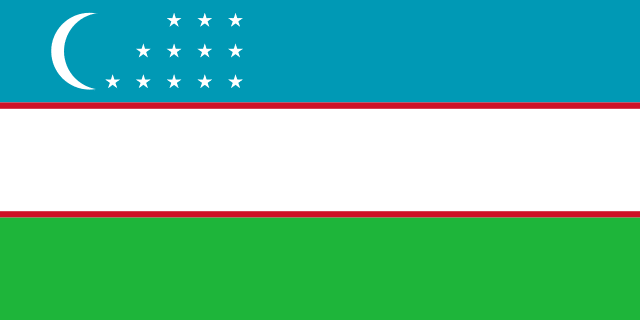СПЕЦИФИЧЕСКИЙ ИММУННЫЙ ОТВЕТ НА ВАКЦИНАЦИЮ РАЗЛИЧНЫМИ ВИДАМИ ПНЕВМОКОККОВЫХ ВАКЦИН У ДЕТЕЙ
И.А.Каримджанов, Ташкентская Медицинская Академия
Е.А.Шамансурова, Ташкентский педиатрический медицинский институт
М.П.Костинов, Научно-исследовательский институт вакцин и сывороток. И.И. Мечникова, Москва, Россия
П.М.Мадрахимов Ургенчский филиал Ташкентской медицинской академии
Резюме
В Узбекистане зарегистрированы два вида пневмококковых вакцин для детей: Prevenar-13 («Пфайзер», США) и Пневмосил-10 (Индия). Prevenar-13 содержит полисахариды тринадцати серотипов пневмококка, конъюгированных с генно-инженерным дифтерийным анатоксином, в то время как Пневмосил-10 содержит полисахариды десяти серотипов пневмококка. До 2020 года детей прививали вакциной Превенар-13, а после 2020 года — вакциной Пневмосил-10. Наше исследование оценивало уровень иммунного ответа (IgG) к 15 серотипам пневмококка у детей с пневмонией и у здоровых детей. Анализ сывороток показал, что после прививки уровень IgG был выше в случае вакцины Prevenar-13 в большей степени, чем при использовании 10-валентной вакцины (в 1, 3-2 раза).
Ключевые слова: пневмококк, капсульный полисахарид, вакцинация, дети, антитела против пневмококка
Первая страница
54
Последняя страница
60
Для цитирования
И.А.Каримджанов, Е.А.Шамансурова, М.П.Костинов, П.М.Мадрахимов СПЕЦИФИЧЕСКИЙ ИММУННЫЙ ОТВЕТ НА ВАКЦИНАЦИЮ РАЗЛИЧНЫМИ ВИДАМИ ПНЕВМОКОККОВЫХ ВАКЦИН У ДЕТЕЙ// Евразийский вестник педиатрии. — 2023; 2 (17): 54-60 https://goo.su/mpMx0
Литература
- 1. Baranov A.A. The role of S.pneumoniae in the structure of bacterial infections in children hospitalized in hospitals in Moscow in 2011-2012 / Baranov A.A.. Namazova-Baranova L.S., Mayansky N.A. et al. // Pediatric pharmacology. 2013;10(5):6-12.
- 2. Bayazitova L.T. Community-acquired pneumonia of pneumococcal etiology and microbiological aspects of nasopharyngeal carriers — Streptococcus pneumoniae in children in the Republic of Tatarstan, Tyupkina O.F., Chazova T.A. et al. // Infection and immunity. 2017;7(3):271-278.
- 3. Briko N.I., Korshunov V.A., Namazova-Baranova L.S. The results of a three-year vaccination of children against pneumococcal infections in Russia // Ped. Pharmacology. 2018;15(4):23-26.
- 4. Daminov T.A., Tadzhieva N.U., Tuychiev L.N. The results of the study of S. Pneumoniae serotypes isolated from sick children with pneumococcal infection // Infection, immunity and pharmacology. — Tashkent, 2017;2:50-55.
- 5. Instructions for use of the vaccine Prevenar 13 – instruction. — LP-000798-041016.
- 6. Immunization vaccines and biologicals. Pneumococcal infection. Available from: http://www.who.int/immu-nization/diseases/pneumococcal/ru/ (accessed: 07.14.2020).
- 7. Lazareva M.A. Nasopharyngeal carriage of Streptococcus pneumoniae in pupils of orphanages, preschool institutions and unorganized children under 5 years old /Lazareva M.A., Kulichenko T.V. et al. // Questions of modern pediatrics. 2015;14(2):246-255.
- 8. Makhkamova G.T. The role of Streptococcus Pneumoniae in the etiology of respiratory diseases in children, effectiveness: autoref. diss…. PhD. — Tashkent, 2020;51.
- 9. Somova A.V., Romanenko V.V., Golubkova A.A. Epidemiology of S. pneumoniae -associated pneumonia and analysis of the effectiveness of vaccination against pneumococcal infection in children under 6 years of age //Epidemiology and Vaccinal Prevention. 2018;17(1):25-32.
- 10. Tatochenko V.K. Pneumococcal infection: modern a look at the problem and prevention // Issues of modern pediatrics. 2007;6(1):85-90.
- 11. Kholodok G.N. Frequency of detection and characterization of Streptococcus strains pneumoniae isolated from carriers and sick children in the Khabarovsk Territory/ Kholodok G.N., Morozova M.V., Alekseeva I.N. et al.// Journal. microbiol. 2010;4:92-96.
- 12. Yastrebova N.E., Grishchenko N.V., Kostinov M.P. Experience in the use of pneumococcal vaccines for the study of humoral immunity // Journal. microbiol. 2012;2:12-17.
- 13. Troeger C. Estimates of the global, regional, and national morbidity, mortality, and aetiologies of lower respiratory infections in 195 countries, 19902016: a systematic analysis for the Global Burden of Disease Study 2016/ Troeger C., Blacker B., Khalil I A. et al.// Lancet Infect Dis. – 2018;18(11):1191-1210. doi: https://doi.org/10.1016/S1473-3099(18)30310-4
- 14. Wahl B. Burden of Streptococcus pneumoniae and Haemophilus influenzae type b disease in children in the era of conjugate vaccines: global, regional, and national estimates for 2000-15/ Wahl B., O’Brien K.L., Greenbaum A. et al. //Lancet Glob Health. 2018;6(7):744-757. doi.: https://doi.org/10.1016/S2214-109X (18)30247-X
- 15. Pneumococcal disease. Surveillance and Reporting. Available from: https://www.cdc.gov/pneumococcal/surveillance.html (accessed: 07.14.2020).
- 16. European Center for Disease Prevention and Control. Invasive pneumococcal disease. In: ECDC. Annual epidemiological report for 2017. Stockholm: ECDC; 2019 Available from: https://www. ecdc.europa.eu/en/publications-data/invasive-pneumococcal-disease-annual-epide-miological-report-2017.
- 17. Ouldali N. Invasive pneumococcal disease incidence in children and adults in France during the pneumococcal conjugate vaccine era: an interrupted time-series analysis of data from a 17-year national prospective surveillance study/ Ouldali N., Varon E., Levy C. et al. //Lancet Infect Dis. 2020;21(1):137-147. doi: https://doi.org/10.1016/S1473-3099 (20)30165-1
- 18. Desmet S. Dynamic changes in pediatric invasive pneumococcal disease after sequential switches of conjugate vaccine in Belgium: a national retrospective observational study / Desmet S., Lagrou K., Wyndham-Thomas C. et al. //Lancet Infect Dis. 2021;21(1):127-136. doi: https://doi.org/10.1016/S1473-3099 (20)30173-0
Статья доступна ниже:



